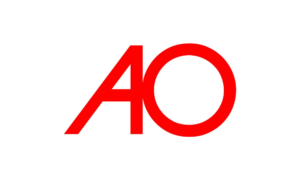Analyse fra Nomuras Bob Janjuah:
My forecast for the market set out in that note, whereby I was looking for a period of risk-off from mid-September through to early October, has proven accurate. Specifically, I was looking for this risk-off phase to take the S&P 500 from the low 2000s down 5% to the 1905 level. Credit spreads have widened and core bond yields fallen with the UST 10yr now trading closer to 2% than 2.5%. Being a core bond bull through 2014 has been a little lonely but rewarding, especially now that equity markets across the globe are broadly down year to date.
The drivers of this risk-off phase that I have highlighted repeatedly this year are global growth weakness, deflation, and concerns about policymakers in the eurozone, Japan, China and, importantly, the US. Broad markets have been looking for decent growth recoveries in Europe and Japan all year, and have been looking for the Fed to start its rate hike cycle. At the risk of being repetitive, I will state clearly in my view that we will not see strong sustained economic recoveries in the major global economies anytime soon, particularly in Europe and Japan. Global deflation should remain the dominant theme, and I repeat the message from my last note that I do not expect the Fed to be hiking rates for a long time – late 2016/2017 seems to me the earliest possible time that the Fed may hike.
In my last note I made particular mention of the fact that, in my view, the US economy was nowhere near strong enough to offset the deflation it would import and is already importing through USD strength vs EUR and JPY in particular, and this has now become a key market theme. In particular, much of the evidence I see points to the fact that the US consumer is neither willing and/or able to lever up to support or boost its consumption (thereby dragging the global economy into a period of sustained stronger growth). I think markets are not fully appreciating the longer-term consequence of the events of 2007 through to 2009 in particular. Confidence has been hit hard in a semi-permanent manner. And in the absence of the US consumer it is not clear who is going to drive global growth, particularly as the growth model for Europe, Japan, and the emerging economies is built around competitive devaluations all designed to boost exports, especially into the US. Governments are retrenching, and the corporate sector, increasingly globally, is focused on financial engineering to optically boost earnings, as opposed to focusing on capex, investment and hiring.
I think markets are now collectively having to consider what I think is the reality – that annual trend global growth is converging down at around 2.5%, well short of the pre-crisis levels of over 4%. And even more worryingly, trend annual global NOMINAL growth is converging down around 3.25%, some 200bp+ short of the pre-crisis levels. In this context the big swings are China and the US, both of which are underperforming vs where expectations were even only a few months ago let alone compared with the highly optimistic consensus forecasts laid out early this year.
In this context, some market commentators have expressed a hope that weaker commodity prices, primarily in USD terms, will provide a consumption boost. This assumes that commodity prices are softer because of oversupply. I would suggest that the market is ignoring the obvious – that commodity prices are softer due to weak demand. If this is the case, then I see no reason to expect a material bounce in consumption from weaker commodities (other than perhaps at the margin in the US), and as such I see no reason why the price of some commodities cannot continue to fall. Crude may be different as USD80/barrel is roughly where the world’s big swing producers start to see their profitability vanish.
Perhaps the best way to summarise my view on the global outlook for growth and inflation is to repeat the summary message from the client conference call I held with Kevin Gaynor a few weeks ago. Namely, that I think we will see UST 10yr yields closer to 1.5% before they get anywhere near 3.5%, with 10yr Bund yields at 50bp; that China is getting closer to the point where it will have to join the global FX wars – March next year is the focal point for me in this regard; and in terms of the Fed, I think it is 50/50 that we will see the Fed EASING monetary policy from here over the next 12 months vs the risks of the Fed starting a rate hike cycle. Here the focus on the US unemployment rate is covering up much weaker employment/aggregate income and deteriorating demographic trends that are playing out beneath the surface. And ultimately I feel the Fed will have to adopt policies that seek to weaken the USD vs the world.
In terms of markets, a weekly close on the S&P 500 below 1905 was and remains my key pivot point. The S&P 500 needs to start closing above 1905 on a weekly basis this week and/or next. If this does not materialise this week then, as I said in September, I would start to get very excited, as then the door would be open to a much deeper correction. If we see consecutive weekly closes below 1905 then it would suggest to me that a very deep correction is under way.
So notwithstanding that my 1905 S&P 500 level is key, what would I do now? It seems to me that unless we get a major unexpected policy and/or sentiment shift this week, the S&P 500 will close below 1905 this Friday. I would then target 1770 as the next stop. This would lead to UST 10yr yields at or below 2% and the new iTraxx XO index would then trade well above 400bp, perhaps closer to 425bp/450bp. And if the S&P 500 also fails to regain 1905 by next Friday’s close (24 October), then I think it is entirely possible that by late November the S&P 500 could take out not just 1660/1650, but also perhaps 1600/1570. This would take UST 10yr yields well below 2%, perhaps as low as 1.75%, and we could see the new iTraxx XO index closer to 475bp/500bp. Throughout all of this I would expect the USD to sell off a little vs the global basket.
Key to remember and watch is 1905 on the S&P 500 on a weekly closing basis. It is also important to remain vigilant on sudden policy and sentiment shifts. I think the likelihood of a much more dovish Fed, and of further easing of policy in the eurozone and Japan this year is rising. If the market experiences the kind of risk-off moves described above over the next four to six weeks, whereby markets reprice their expectations around global growth and inflation more in line with my view already discussed, then I think it is almost certain we will get a policy response from the Fed and/or the ECB and/or the BOJ and/or the PBoC.
If it materialises, this could then set up a meaningful risk bounce from late November into year-end and a little beyond. In the interim, and over and above the S&P 500 1905 caveat, we should not expect markets to move in straight lines. So even if we the S&P 500 trades down to the 1770/1660/1570 area by late November, there should still be occasional short sharp counter-trend bounces. But the S&P 500 will need to recapture 1905 on a weekly closing basis before I change my bearish outlook for the next four to six weeks.
Lastly, I want to remind readers of a message that may be buried in the past:
When QE1 ended the S&P 500 fell just under 20% in a roughly three-month period before the QE2 recovery. When the QE2 ended the S&P 500 fell about 20% in a three-month period before the next Fed-inspired bounce (aided by the ECB). QE3 is ending this month. The S&P 500 peaked in the low 2000s in Aug/Sept. So, -20% and three months would take us to 1600 by late November.














